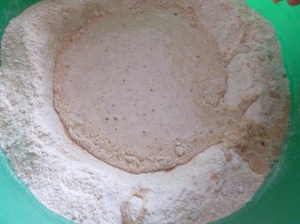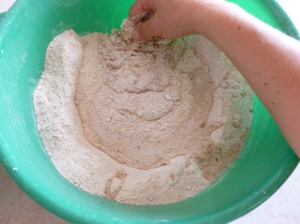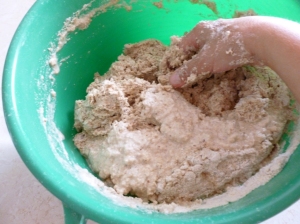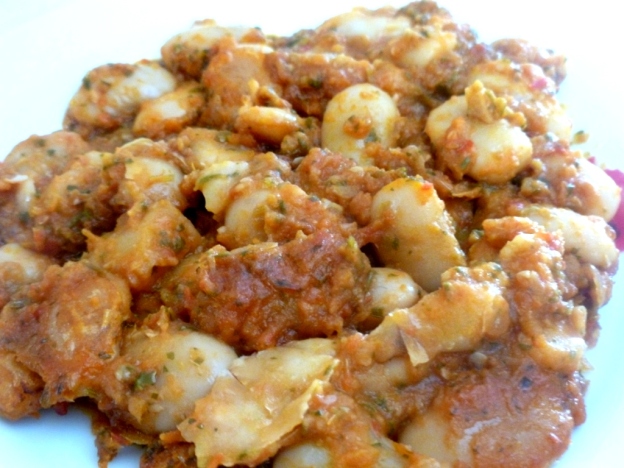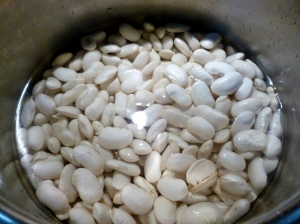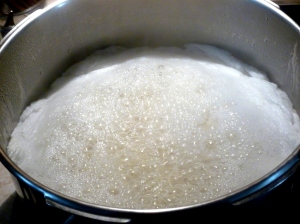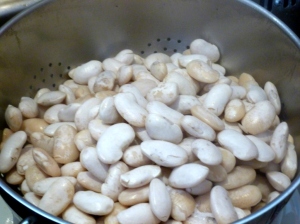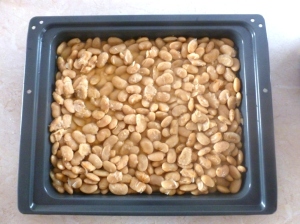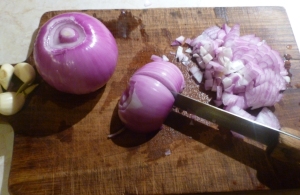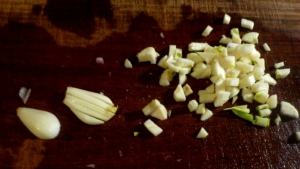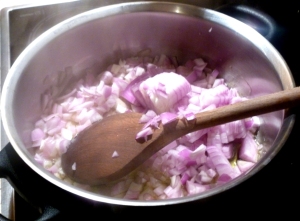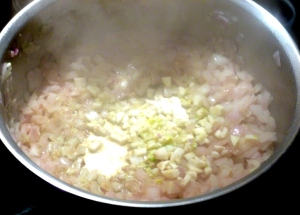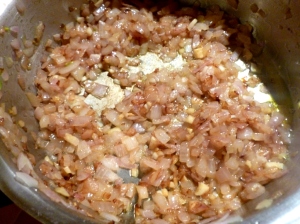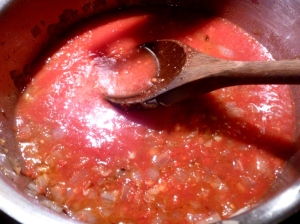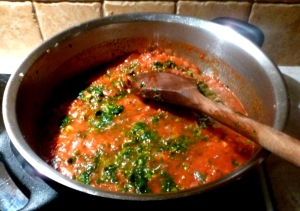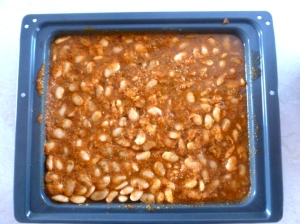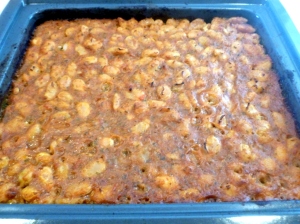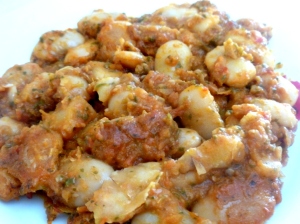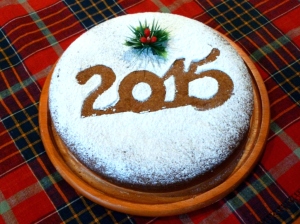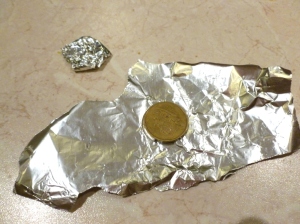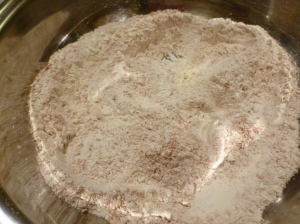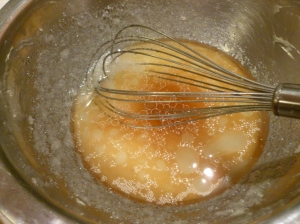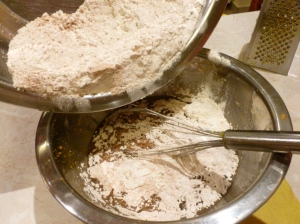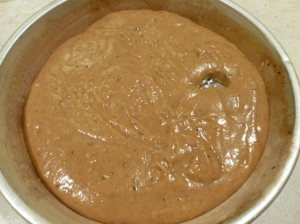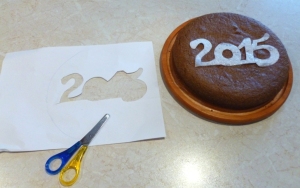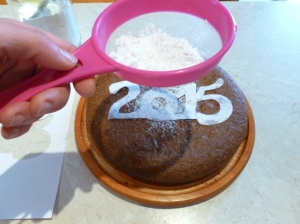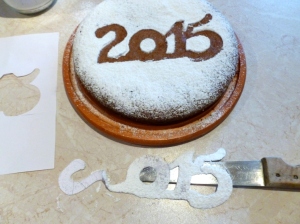Ash Monday or Clean Monday, marks the beginning of Lent, a 7-week period of strict fasting, in preparation for Easter. During this time, the Greek Orthodox church prohibits the consumption of all animal products (meat, poultry, fish, dairy, eggs). Seafood is allowed, but on some days even olive oil is proscribed. Essentially, the faithful become vegans for 48 days.
Although the long Lenten fast is considered -by even the most pious- a strict and difficult fast, Greeks begin it with a bang, a traditional feast, featuring the best of the allowed foods. Customs vary from place to place as to what this meal may include but the undisputed must of the day is a sesame-sprinkled flat bread called Lagana.
It is said that originally Lagana was unleavened, however these days it is always made of leavened bread dough, sometimes with the addition of a little sugar. That means that if you know how to make bread, you know how to make Lagana.
Let’s get started:
Lagana (Greek Lenten flat bread) recipe
Active cooking time: about 30 minutes
Rising time: about 20 minutes
Baking time: about 30 minutes
Recipe of medium complexity (easy for those with some bread-making experience)
Appropriate for vegetarians and vegans. Kosher & Halal.
Ingredients for one large lagana
1/2 kilo (1 pound) of flour (see Note 1, below)
Dry yeast and water, proportional to the amount of flour you’ll be using
a little salt
sesame seeds
Optional ingredients
1-2 tablespoons of sugar
2 tablespoons of olive oil
Utensils Bowl for mixing the dough, countertop or table, large baking tin (optional: baking paper, rolling pin).
Preparation Grease your baking tin or line it with baking paper. Sift your flour (or flours) with the salt and dry yeast in a large bowl.
Note 1: All purpose flour will do, but you may also use whole-grain, gluten-free or any other kind or combination you fancy. The golden rule is, if you like it in bread, you’ll like it in a lagana.
Note 2: Although yeast is more or less the same everywhere, not all brands are. Read the instructions on the package and use the recommended amount. Fresh or frozen (thawed) yeast may also be used, if you have them. This yeast must be diluted in lukewarm water before use. Take care not to leave any undiluted lumps. Pour it through a sieve into the “crater” and proceed as below.
Make a “crater” in your flour and pour in some of the water, which must be lukewarm.
Note 3: Your water must be somewhat warm for the yeast to rise. Too hot and it will kill off your yeast, too cold and your dough will take ages to rise.
Note 4: Metals conduct heat so well that they will cool down your dough and delay rising. Use a plastic or wooden bowl and a wooden table or synthetic countertop, if possible.
Gradually start pulling the flour in the water. Your aim is to have a sticky mixture, into which all flour is incorporated. Add small amounts of water as needed, careful not to overdo it.
Note 5: No one can tell you how much water your flour will hold. That depends on the kind of flour you’re using, its quality, environmental conditions (heat, humidity), even altitude. Use caution when adding water or you risk getting a batter instead of a dough.
Flour your countertop well and empty the dough on it. It will be very sticky.
Start kneading, by folding the dough in half, then pushing down on it hard, stretching it at the same time. Then give it a quarter turn and repeat. Reflour the countertop every few rounds to keep the dough from sticking onto it. Continue until you have a smooth, elastic ball.
Put the ball in your baking pan and flatten it with your hands. If you’ve done things right it should be elastic and trying to go back into being a ball. I’ve found that using a rolling pin solves the problem.
Roll a thick sheet and wrap it around the pin for transfer. Lay it carefully in the baking tin and spray with a little water (so that the sesame sticks). Sprinkle the sesame and poke the bread with your fingertips here and there, to create the trademark dimples.
Cover with a towel and let it rise in a warm place, away from drafts.
Note 6: Rising needs a warm environment: a cosy home will do, but if it’s cold you may want to cover your lagana (pan and all) with a blanket or two. Alternatively, put it in the oven at 30 ⁰C (86 ⁰F) convection. If using the first method, preheat your oven at 180 ⁰C (356 ⁰F). If using the second, simply turn up the heat when it’s time to bake.
After about 20 minutes in a warm environment, the lagana should have risen and be ready for baking. Bake for 20-30 minutes, depending on the thickness of your Lagana and how soft or crispy you like it.
Enjoy!
Note 7: Lagana makes excellent sandwiches. Just cut a piece, slice it in half horizintaly and fill with whatever strikes your fancy. It also freezes well. Simply cut into pieces and freeze in plastic bags.


